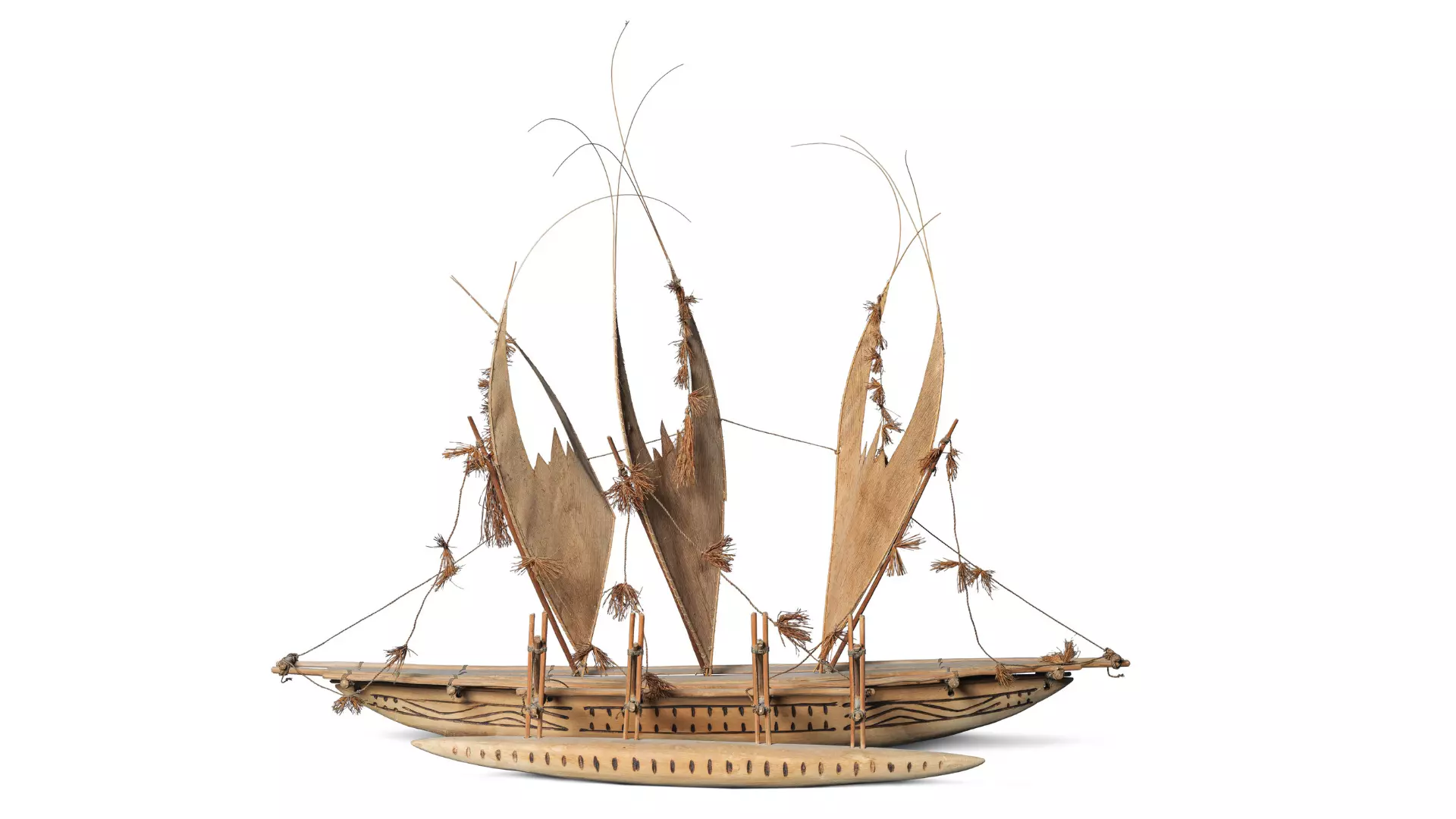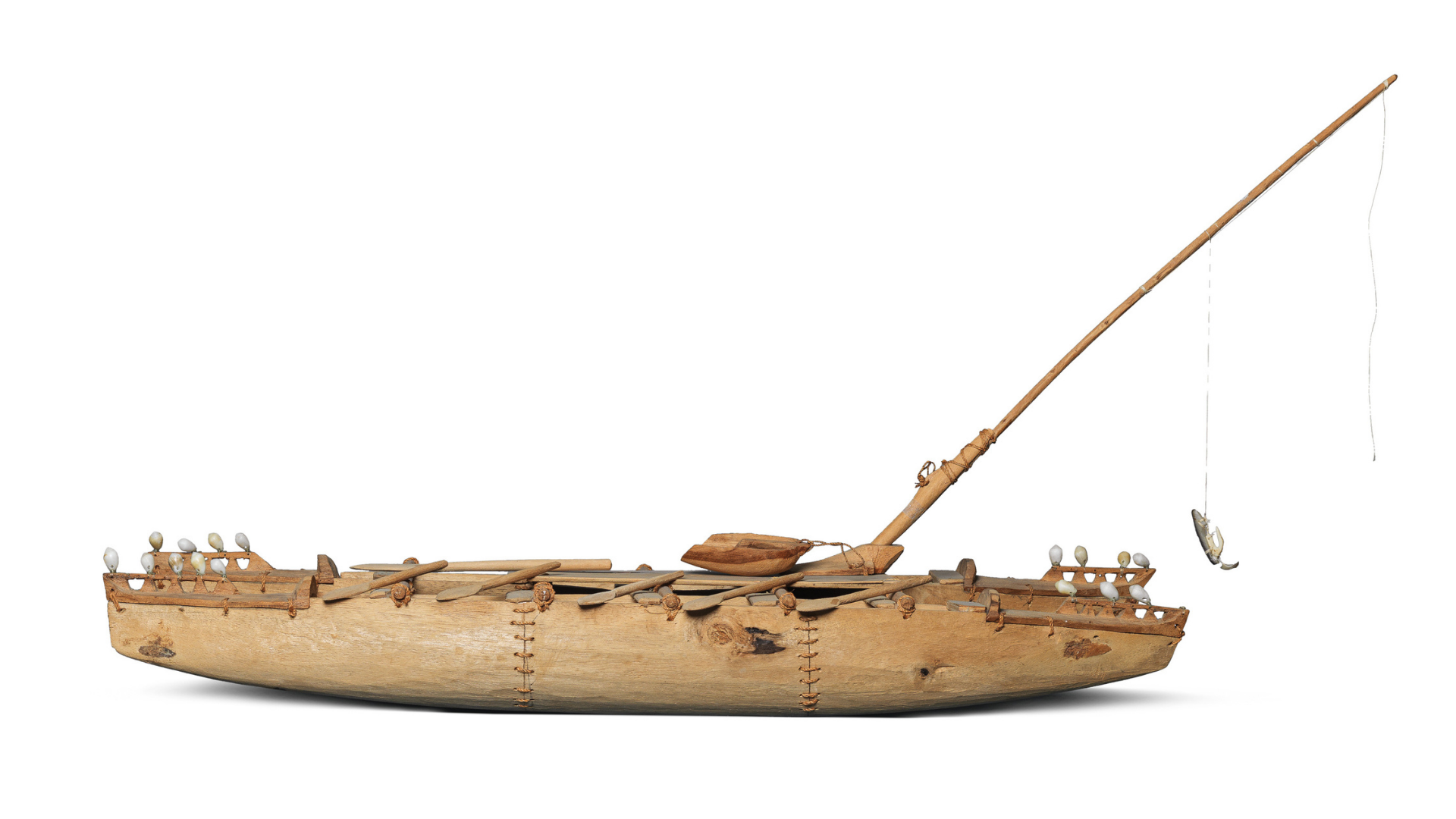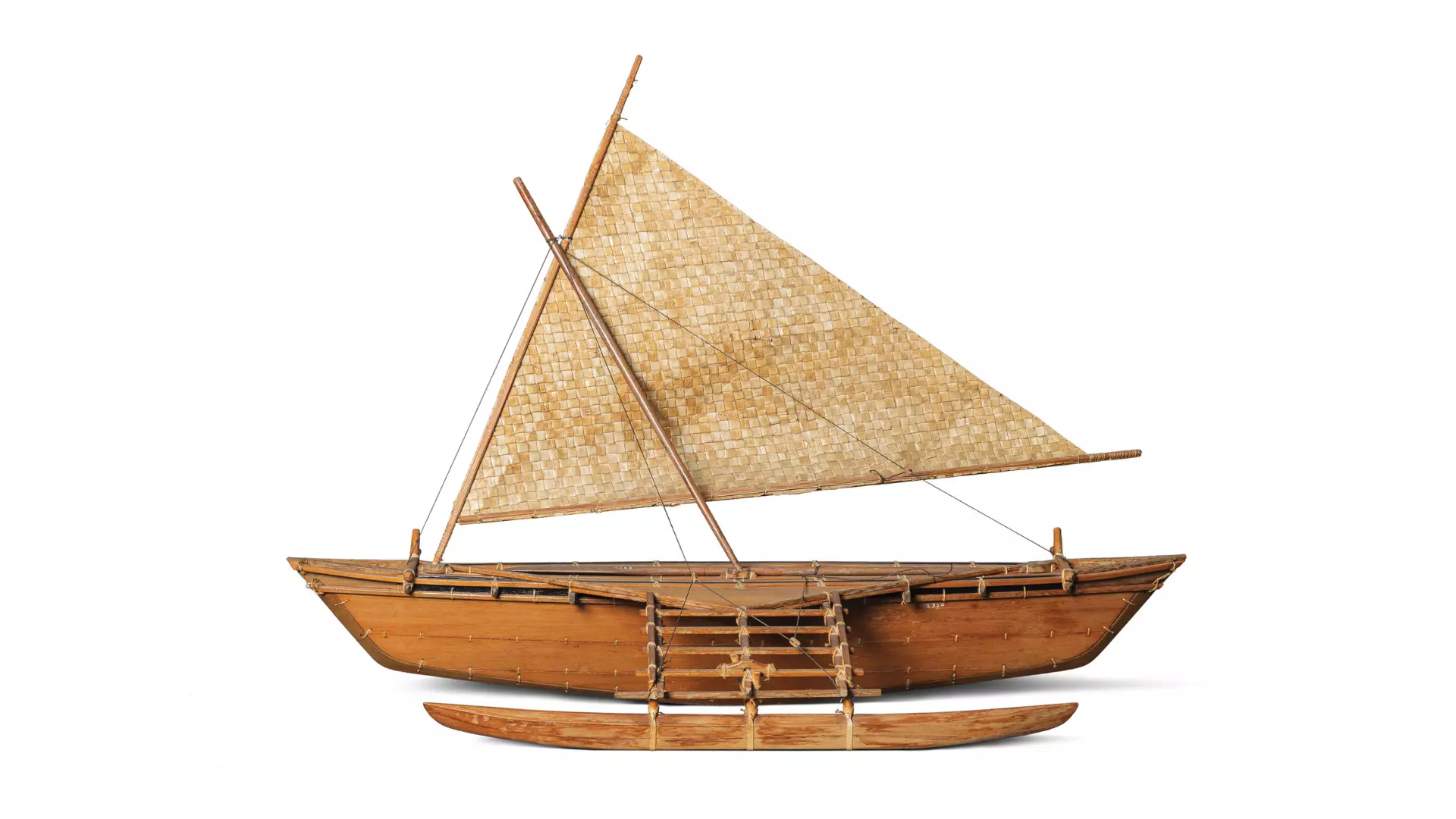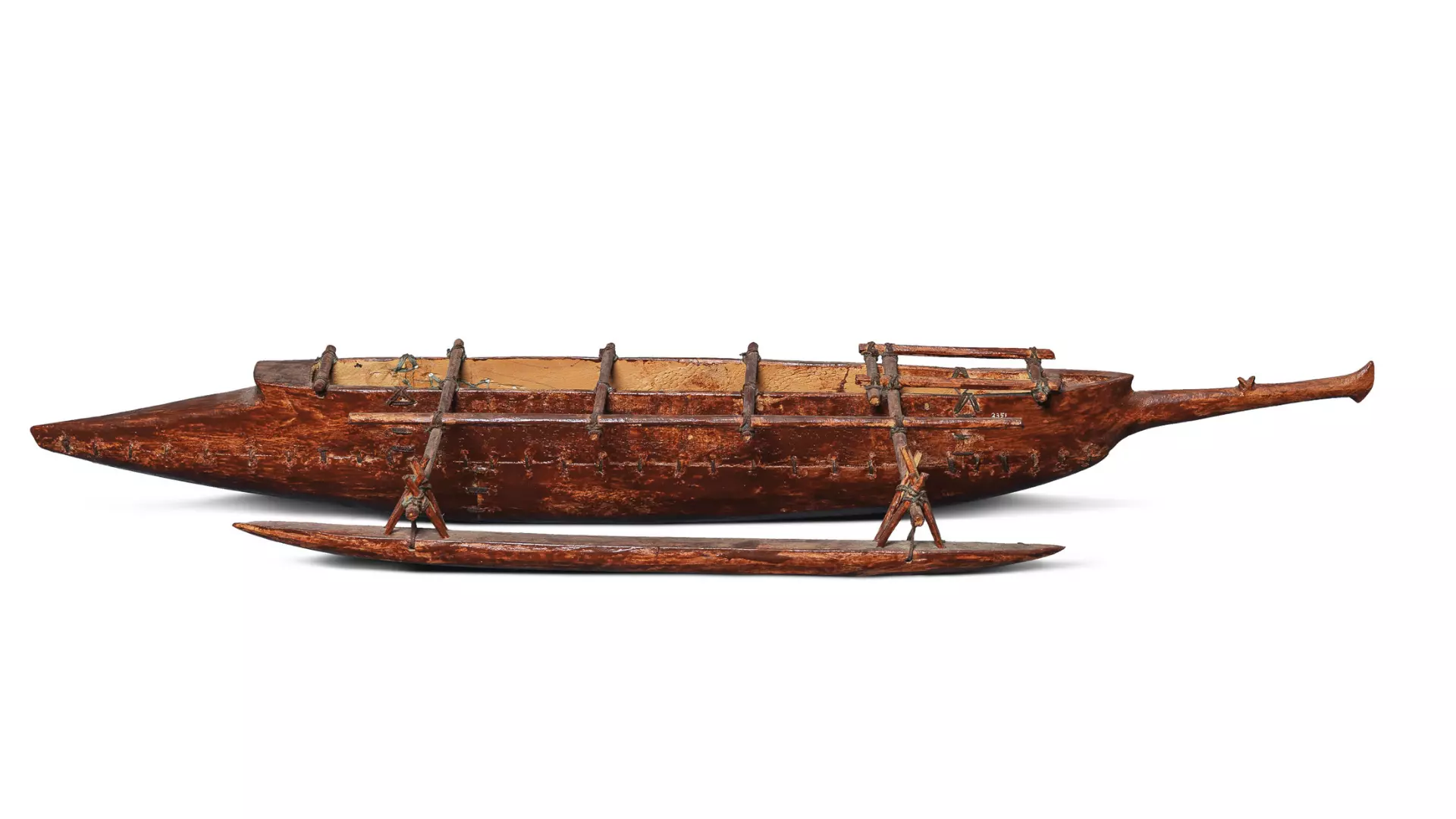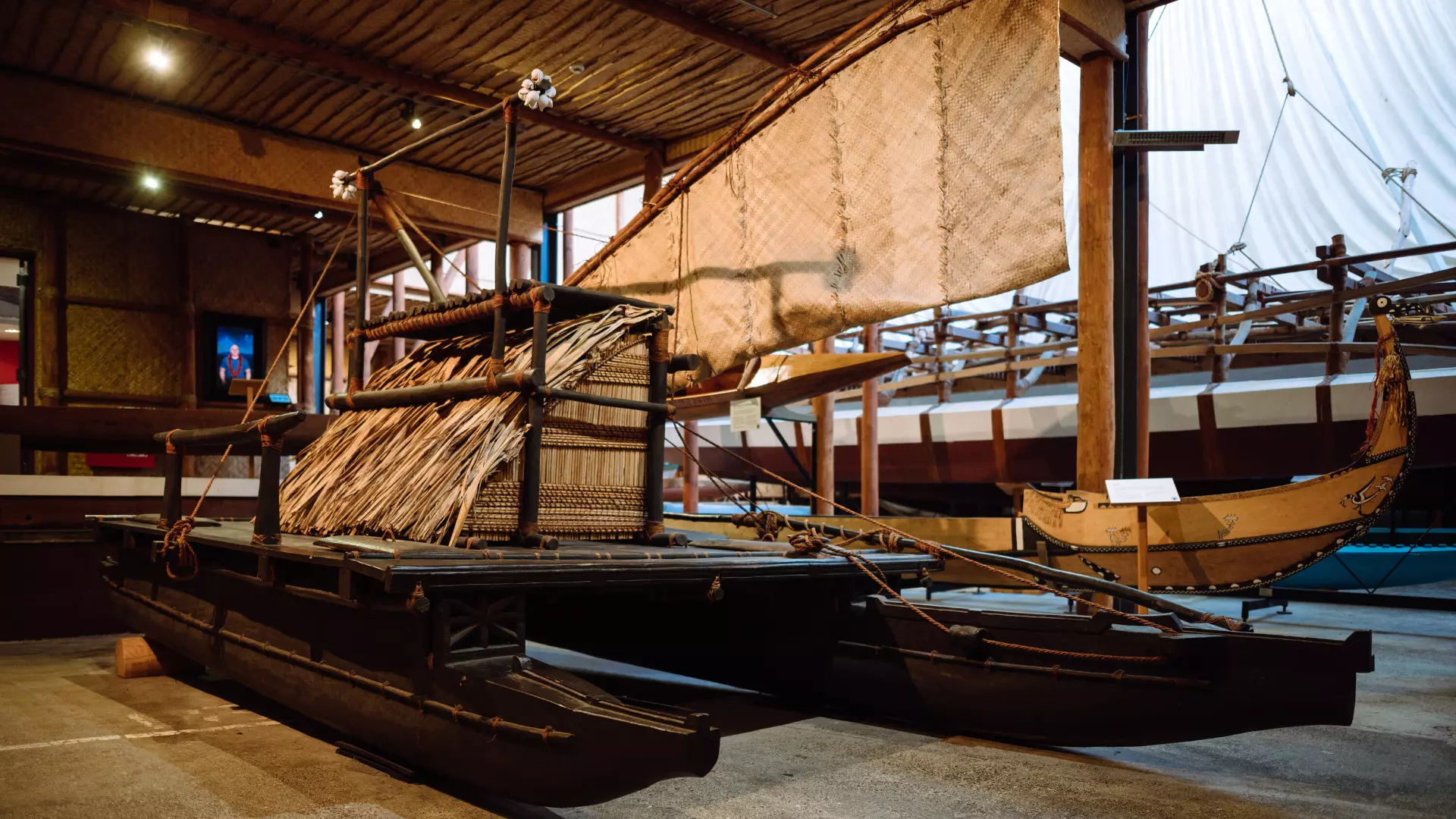Vaka of Oceania
The museum’s collection of model canoes showcases the naval architecture and seafaring talent found throughout Te Moana-nui-a-Kiwa the Pacific Ocean. The designs are singular. One references a canoe used for ceremonial exchange in Papua New Guinea; another a vessel that ran down sharks in Tokelau; another an outrigger which hived between and around Kiribati’s many atolls and its 3.5-million-square-kilometre archipelago. Most models were made for tourists, suitable for careful transport home in a suitcase; a larger one was built for the museum, as an exemplar of Fijian/Sāmoan/Tongan wizardry.
By Frances Walsh | 9 July 2021
Papua New Guinea has a rich tradition of canoe construction and design. The above model with its three frou-frou claw sails looks to be a mash-up for the tourist market. One of the country’s outriggers was specifically used in the Kula cycle, a ceremonial exchange and trade system that linked many islands in the Massim region off the south-eastern tip of New Guinea. The Kula canoes, or masawa, were much more elaborate in some ways than the example shown here: carved by experts, they were repainted and redecorated with shells on each major voyage. They had names such as Flying Fish. In the late 1800s the Trobriand Islands alone had roughly 60 masawa.
